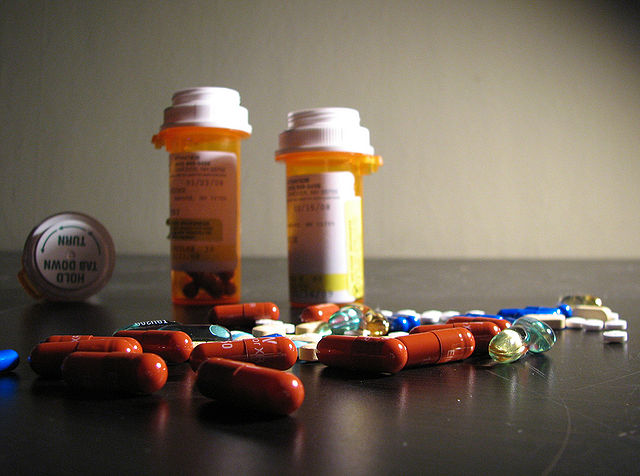10 years and a billion dollars. These are commonly cited statistics for the time and investment required to bring a new pharmaceutical drug or biologic to market. With this staggering cost profile, pharmaceutical companies look for opportunities with the largest product sales potential. This often leads them to prioritize investments in therapeutics for diseases with large and constantly replenishing consumer bases, including diabetes and heart failure.
But where do patients with rare diseases fall under this for-profit drug-development system? Rare diseases, which affect fewer than 200,000 Americans, are often overlooked. As many as half of the people affected by rare diseases in the U.S. are children, as these afflictions are usually genetic and chronic, frequently resulting in early mortality. Remedies for rare diseases are typically exorbitantly priced to recoup development costs. Without sufficient market appeal, imaginative incentives must be designed.
One program, promulgated by the U.S. Congress in 2012, aimed to do just that. This program created an incentive strategy to encourage biotechnology and pharmaceutical companies to invest in research and development for rare pediatric diseases (RPDs). The cornerstone of this program is the creation of priority review vouchers (PRVs), which reward companies that undertake the risk to develop therapies for rare conditions.
These PRVs allow the companies holding them to “cut to the front of the line” during the regulatory review process with the U.S. Food and Drug Administration (FDA), thereby truncating the time of approval from 10 months to six months — a strategic advantage in commercial development, generating extra revenue from earlier sales and doctor prescriptions. Alternatively, these PRVs can be sold by the holder and transferred to other companies, providing tangible motivation to obtain one.
In 2007, the PRV program was created to incentivize sponsors to treat tropical diseases, another historically under-researched class of diseases. In 2012, this program was expanded to apply to RPDs. By 2016, the PRV program was expanded again to spur the development of medical countermeasures, including drugs to treat harm from chemical or nuclear agents. These three subprograms successfully created therapies that have received vouchers, with the RPD program having stimulated the most development to date.
As of April 2024, the FDA has granted 53 RPD PRVs for 39 diseases. Of these 39 RPDs, only three had pre-existing FDA-approved therapies — validating a key niche for capitalistic incentives for RPD research. Of these 53 vouchers issued, more than half have been granted since 2019. This exponential uptick in the last five years was expected, considering the decade-plus time frame typically required for drug development and underscores the growing interest of sponsors to participate. Meanwhile, of the PRVs redeemed with the FDA, six were used for priority review of drugs to treat other rare diseases.
For a New Drug Application (NDA) to qualify for a voucher, the sponsor must ensure that the target drug meets key criteria: the disease must affect fewer than 200,000 people in the U.S., be life-threatening, and have no approved alternative treatments available. If criteria are met, the sponsor will file an NDA with the FDA, concurrently with a request for a PRV award. If the drug is approved, the voucher is granted. Between 2012 and 2022, more than 560 new drug candidates were granted RPD designation by the FDA, with nearly 350 of these since 2020, suggesting a positive bellwether in awarded PRVs in the years to come.
That PRV is like the golden ticket from Willy Wonka and the Chocolate Factory. It can be used later by the sponsor to shorten the timeline for approval of a different product in its pipeline, or it can be sold on the open market to another sponsor, creating cash flow for the original holder. To date, 24 awarded PRVs are still held by the sponsor that earned them and 29 have been sold.
Cynics of the program fear that as more PRVs are awarded, the second-hand PRV market will become saturated, causing their value to plunge. As a result, the House Energy and Commerce Committee proposed an amendment to limit PRV redemption for specific drugs, including single-human drugs. Single-human drug applications are experimental medications granted under “compassionate use” programs for patients who have exhausted all other treatment options. If this amendment passed, PRVs would not be redeemed for earlier approval of common medications, limiting their scope. That same amendment also “proposed that PRVs only be awarded to companies with annual sales under $500 million,” according to an interview with Hayley Mason, a policy analyst at the National Organization for Rare Disorders (NORD). NORD adds that this “could cause a chilling effect.” Ultimately, the amendment was rejected. As any free market believer knows, too much regulation on an already strong program is likely to hinder it.
The narrow patient populations pose a challenge for smaller biotechnology companies in particular, which cannot afford to take risks to develop drugs for rare disease programs. The PRV program can open the door for these companies to focus on treatments for ultra-rare diseases without fear of bankruptcy, as a voucher approval can be sold for continued activity in research and development, as noted in NORD’s July 2024 PRV policy briefing.
Similarly, for larger pharmaceutical companies in competition when pursuing FDA approval for similar drugs, earning or purchasing the PRV for earlier approval is pivotal for branding recognition and recovering expenses. Imagine a scenario in which several companies are pursuing breakthrough therapies for a mass-market drug in the same disease. As all of them are nervously eyeing the timeline to file with the FDA, running neck-and-neck, purchasing a PRV from another company can earn them an FDA verdict four months sooner. This is not just a strategic advantage to enter the market before competitors, but also a lucrative one, as the first-to-market drug will benefit directly from name recognition, positive reputation, strong sales, and dominant market share due to rapid, immediate prescribing habits by doctors.
The PRV program has provided key market-based incentives for drug companies to focus on rare disease therapies that otherwise have less direct earning potential. It has spurred commitment to rare diseases and a robust development pipeline. It has brought hope that many new drug therapies will be approved, additional PRVs will be generated, and the trend will continue. This forges a clear and optimistic path forward for patients with critical unmet medical needs, managing historically under-researched rare diseases.
Importantly, the RPD PRV program is up for renewal in Congress in 2024, through the Creating Hope Reauthorization Act. The passage of this bill would renew the program for five more years. Mason adds that the FDA should create a database to store information regarding PRV awards and uses. According to Mason, currently “many of the transactions for PRVs are done in confidentiality,” so policy professionals have no easy way of tracking them. “To see the program’s full success, mandating reporting of the receiving, buying, selling, and redemption of PRVs should occur.” Mason and other policy analysts believe this improvement would strengthen the program by allowing its full potential to be systematically studied.






